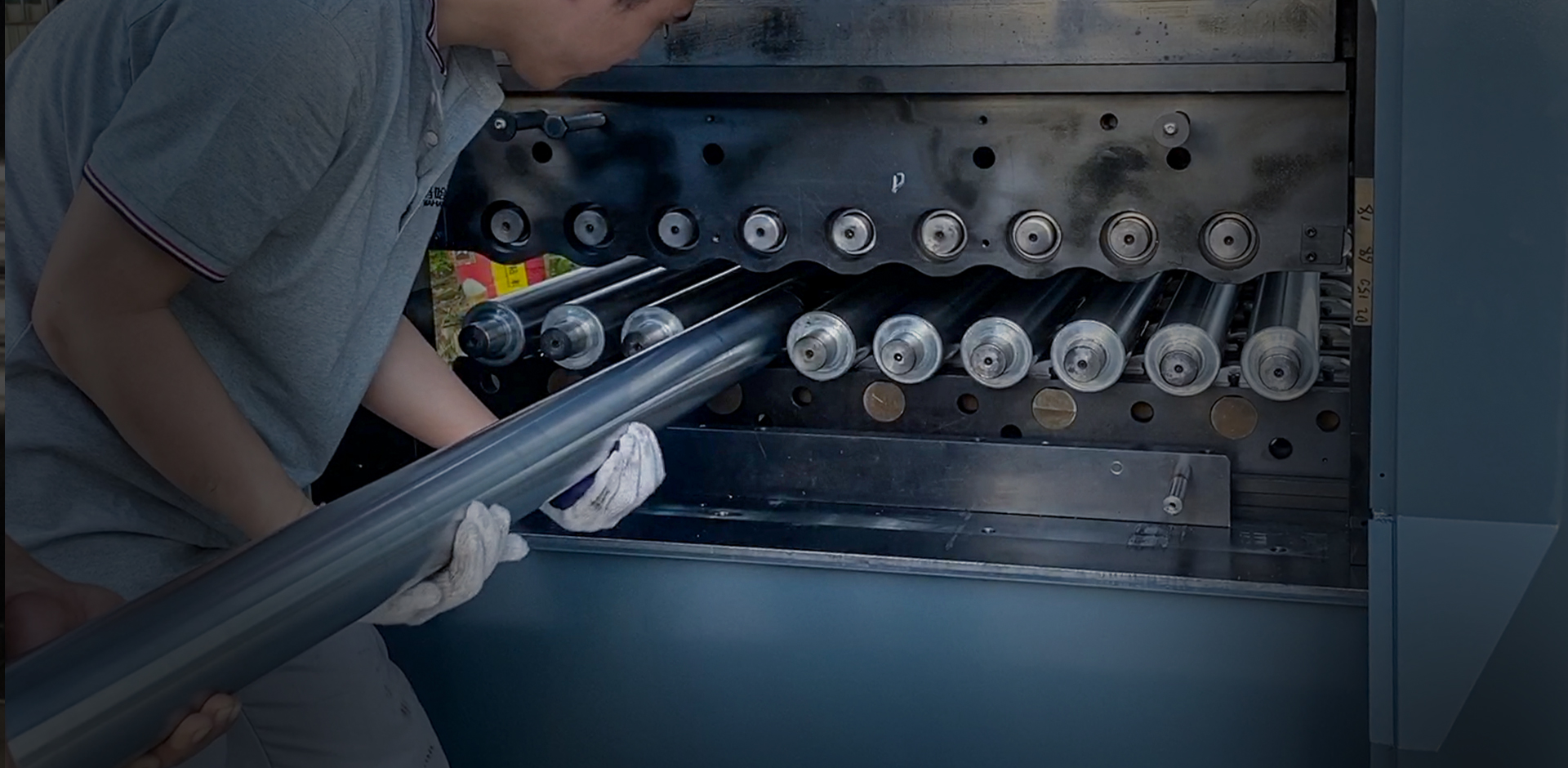How does the leveling machine level the steel plate with a thickness of less than 30mm, and the error flatness value is only 0.01mm? What mechanical and physical principles are used to achieve the effect of leveling and straightening? The editor of the leveling machine manufacturer will study with you to understand: "The principle and method of leveling of steel plate leveling machine". The leveling machine can be divided into five-axis rollers, seven-axis rollers, nine-axis rollers,... According to the relative position, it can be divided into parallel type and non-parallel type, as well as the leveling machine and coil folding leveling machine with paired guide rollers, large-scale multi-axis leveling machine. The flat machine can straighten steel plates with a thickness of 50MM and a width of 2000MM.
Overall appearance drawing of leveling machine
The principle of straightening the steel plate is explained below by taking the single-row paired guide roller leveling machine in Fig. 1 as an example.
1, 2, 3, 4-work shaft rollers 5,7-feeding guide rollers 6 -discharging guide rollers. 5 and 7 shaft rollers are guide shaft rollers, 5 is the discharge guide shaft roller, and the rest are work shaft rollers. When the sheet is fed between the upper and lower rolls, 1.2.4 three-axis rollers form a group to bend the sheet upward, and 2.3.4 three-axis rollers form a group to bend the sheet downward. The stretch bending that exceeds the yield limit makes the original tight part stretched and balanced with the original loose part, that is, the so-called plastic flow is generated, and the purpose of correction is achieved. Here is a point to explain, through multiple stretching and bending, the original part of Kun is stretched. Here we need to analyze three situations.

1. When the pressure of the upper shaft roller is moderate, only the tight part is stretched, which is balanced with the original loose part to correct the sheet material, which is ideal for people.
2. When the pressure of the upper shaft roller is insufficient, although the tight part is stretched, it is not balanced with the loose part, and the sheet is not completely leveled.
3. When the pressure of the upper shaft roller is too large, not only the tight parts are stretched, but also the loose parts are stretched to different degrees. Although the degree of stretching is balanced and the plate is corrected, the grains of the plate are distorted and broken. The excessive cold work hardening reduces the service life of the plate.

